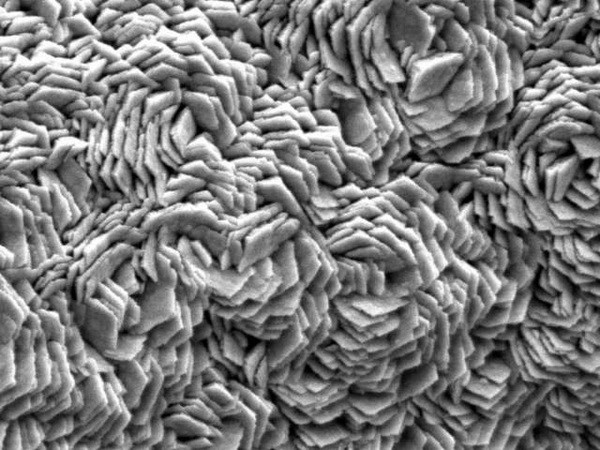Inventing catalyst to separate water into clean energy
Separating water into hydrogen and oxygen to create clean energy can be simplified with just a single catalyst.

The electron microscope image shows graphene-coated nickel foam and then the catalytic surface of iron, manganese and phosphorus.(Source: phys.org).
This is the result of research published on July 26 by experts at Rice University and University of Houston.
Rice University experts have created an electrolytic film , which is a three-layer structure consisting of nickel, graphene and compounds of iron, manganese and phosphorus.
This device has been tested in the University of Houston lab. The bubble of nickel bubbles gives the film a larger surface area, while the graphene conductor will protect nickel from metamorphism and phosphide metal will carry out the reaction process.
This film can overcome catalyst restrictions for either oxygen or hydrogen production, but it is not possible to create these two elements simultaneously.
The study, based on the creation of an oxygen-producing catalyst, was published earlier this year.
- Finding a catalyst can convert CO2 into clean energy
- Australia tests the system for producing drinking water from the air
- The catalyst helps produce methanol directly from carbon dioxide
- Find an extremely effective, surprisingly cheap hydrogen extraction method
- Clean water and numbers to speak
- Water is a catalyst in explosions
- Breakthrough in cheap hydrogen fuel production
- Technology turns dirty water into clean water in Israel
- Successful development of clean energy
- Strange energy sources
- Artificial photosynthesis transforms water into hydrogen and oxygen
- The brilliant inventions of mankind
 Daily use inventions come from universities
Daily use inventions come from universities Special weight loss device helps prevent appetite
Special weight loss device helps prevent appetite 8 inventors were killed by their own inventions
8 inventors were killed by their own inventions Iran invented a motor car powered by water
Iran invented a motor car powered by water